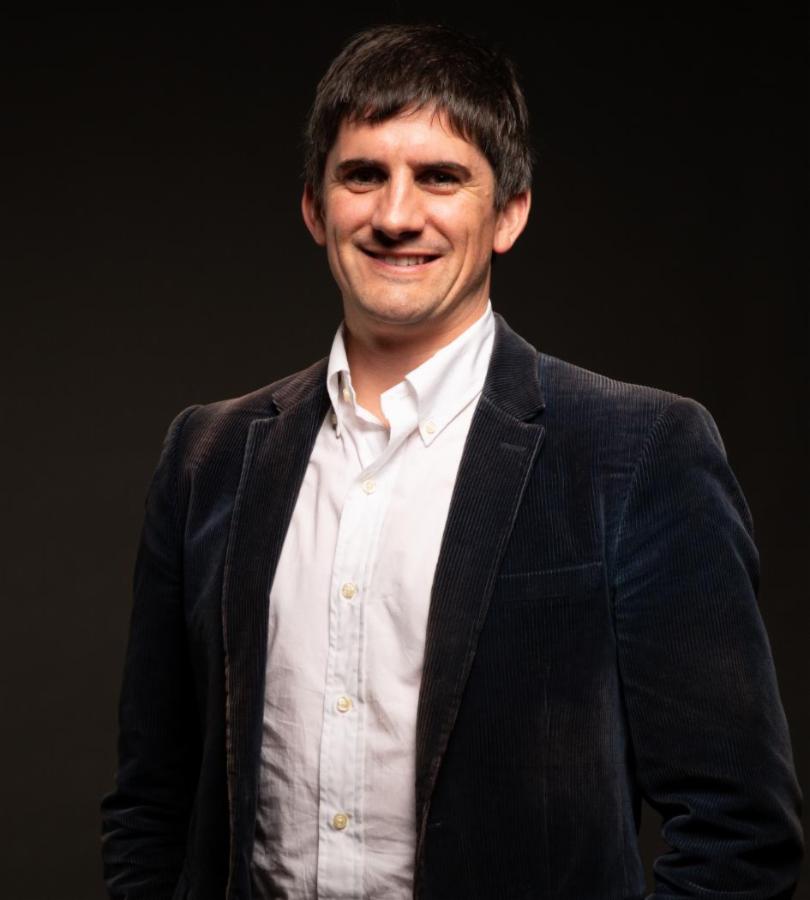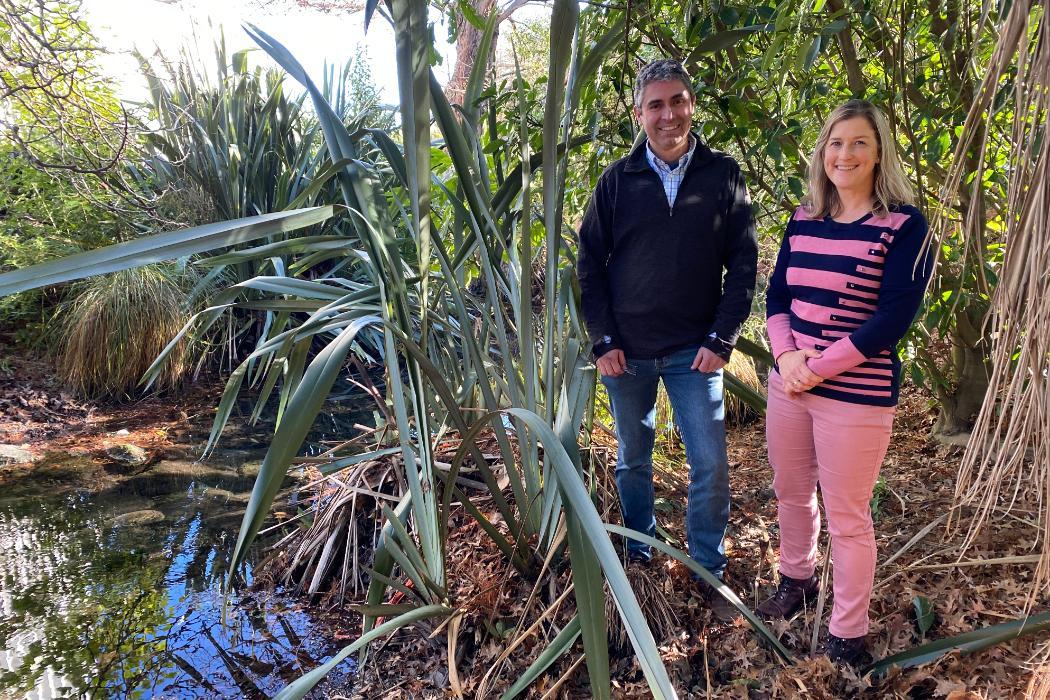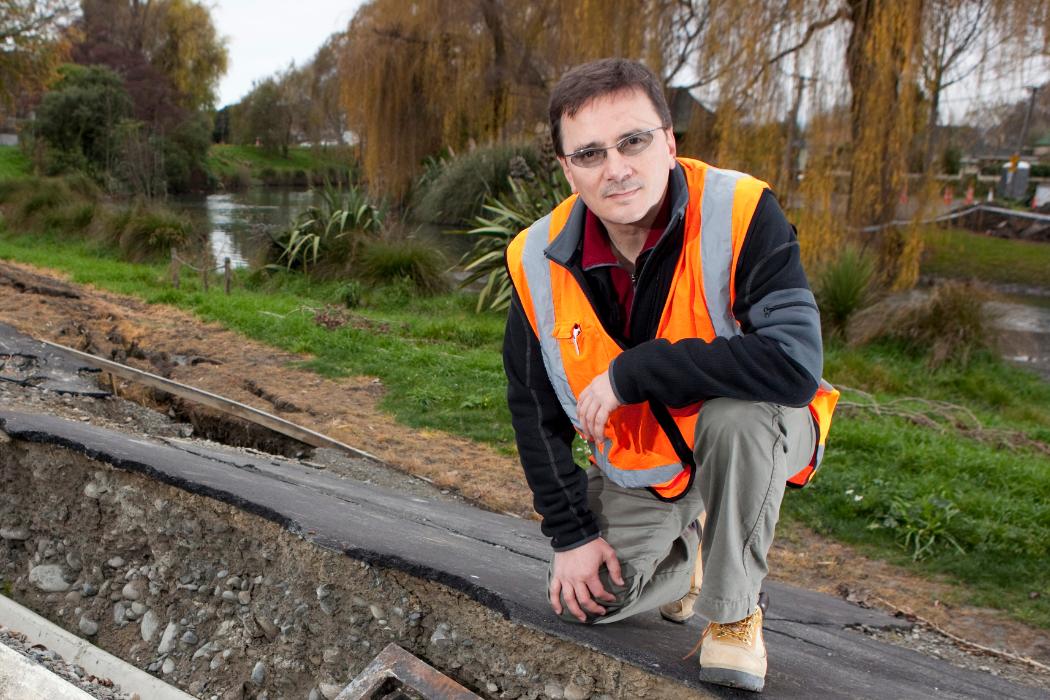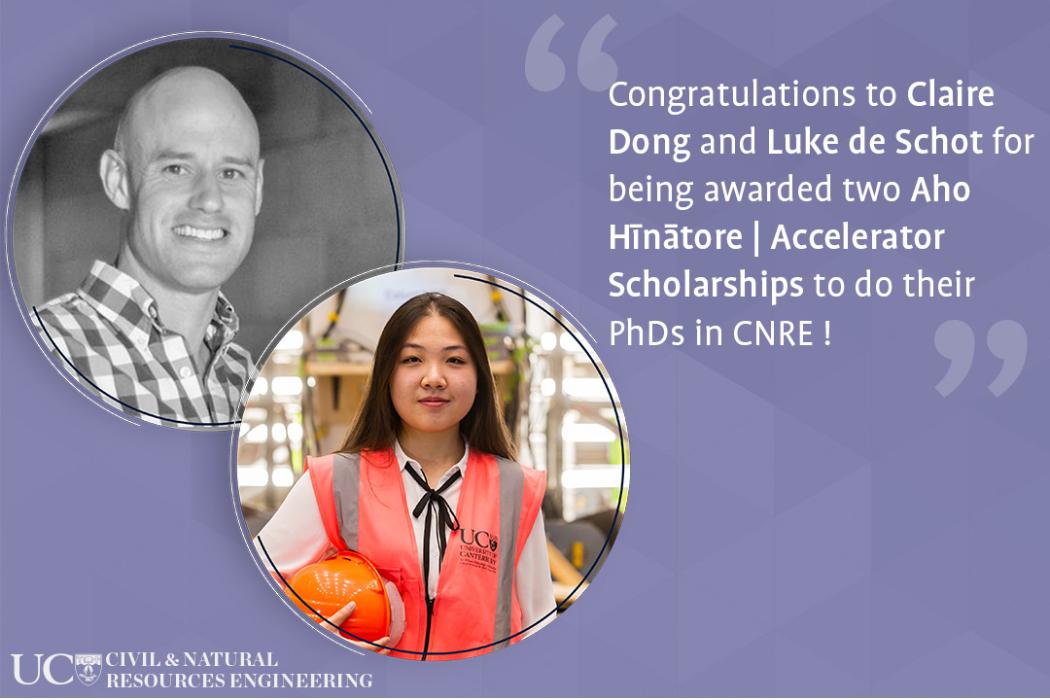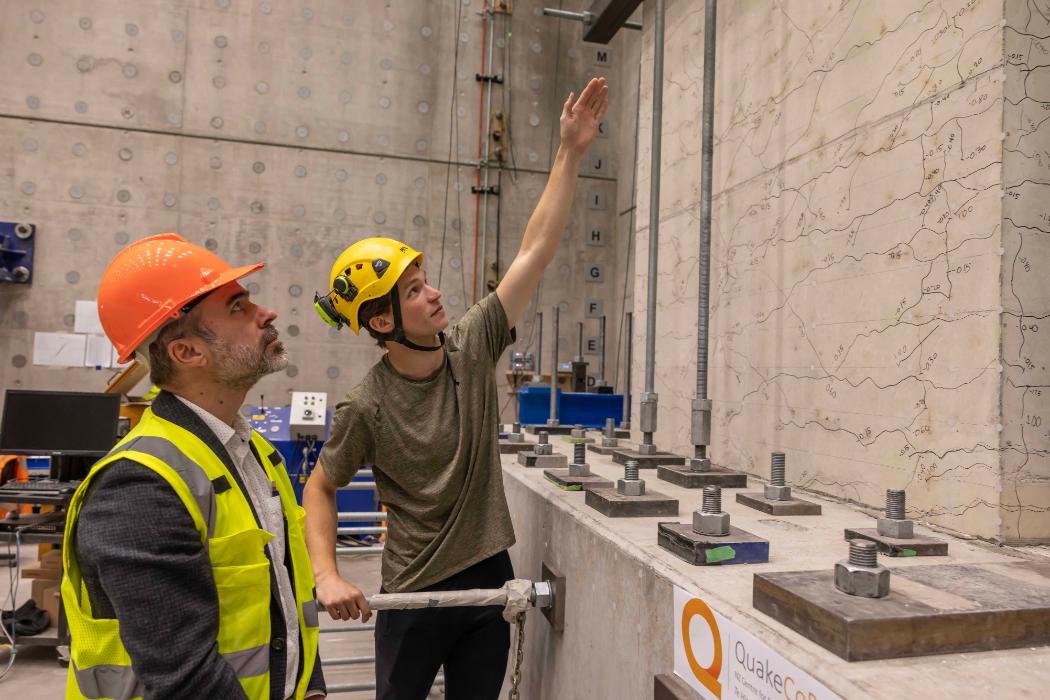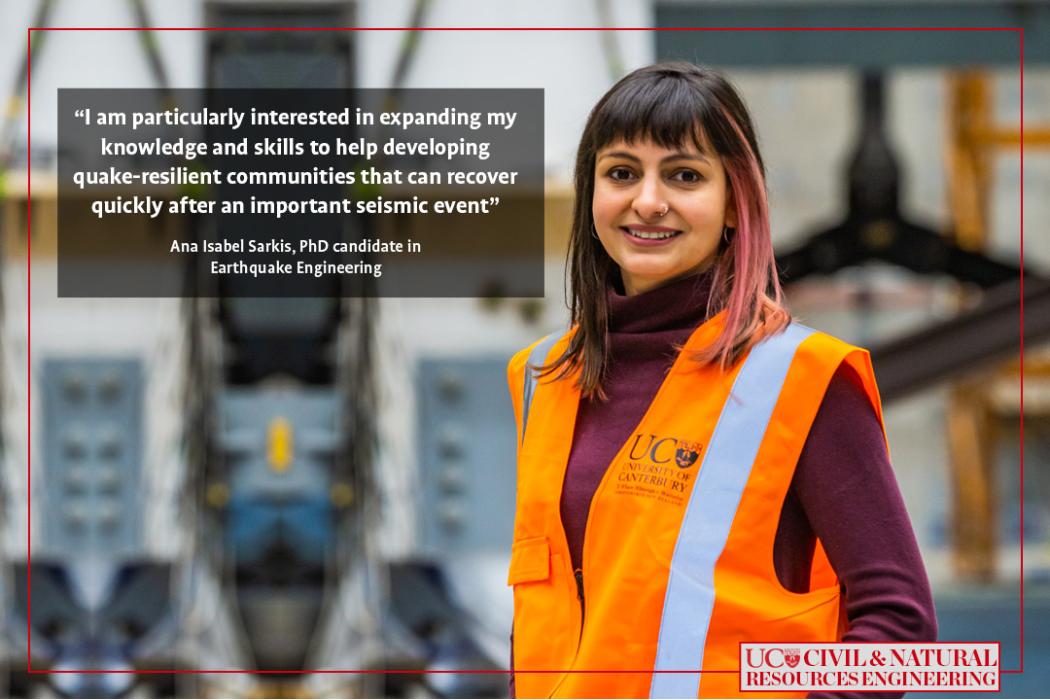Earthquake Engineering includes:
- Assessing the tectonic and fault mechanisms that generate earthquaker to estimate when they will occur and how large they will be.
- Understanding how the earthquake energy trasmits through the ground.
- Quantifying the likely ground surface responses at a specific site throughout the life of a structure.
- Assessing the liquefaction potential of soils at specific sites.
- Designing structures and lifeline services (electricity, gas, transport, water and wastewater) to minimise the damage and disruption during and after an earthquake.
- Planning for emergency response and post-earthquake recovery.
- Preparing communities for earthquakes.
The postgraduate qualifications in earthquake engineering are:
- A Postgraduate Certificate in Engineering, endorsed in earthquake engineering,PGCertEng (Earthquake). This is a 6 month programme of coursework.
- A Master of Engineering Studies, endorsed in earthquake engineering, MEngSt (Earthquake). This is a 12 month programme of coursework.
- A Master of Engineering, endorsed in earthquake engineering, ME (Earthquake). This is a nominally a 18 month programme involving courses (6 months) and thesis (1 year).
- A Doctor of Philosophy, endorsed in earthquake engineering, PhD (Earthquake). This is nominally a 3 year programme of research (thesis).
- Earthquake Engineering course list
Please note that unless applicants have a strong background in earthquake engineering, they will only be admitted in the February of each year.
The following departmental academic staff members are teaching and researching in this area:
Earthquakes - prediction, detection, effects and protection from - problems which are actively researched in Civil Engineering. Here at Canterbury the Geomechanics group have created CUSP (Canterbury University Seismograph Project) accelerograph.
Additional Information
In late 2003 the South Island of New Zealand has experienced several earthquakes, with CUSP recording its the first real earthquake data - an M4.9 event 40 km north-east of Christchurch. This after months of testing with artificial earthquakes on the shaking table.
The CUSP accelerograph was developed by PhD candidate Hamish Avery and Technical Officer Peter Coursey, guided by John Berrill and Mike Dewe (Electrical/IT). The project was motivated by the imminent rupture (in a geological time frame) of the Alpine Fault. The Internet based instrument provides easy maintenance and retrieval of data and uses cheap micro-machined accelerometers developed for triggering car air bags.
The M4.9 September 30th 2003 earthquake was not world shaking; but it did provide a good test of the sensitivity of the CUSP instrument and its ability to detect events just above the noise level. This accelerograph is the first to be installed in the Canterbury Network and is one of a batch of 20 instruments under construction in the Department. Once this batch is complete, production will be taken over by Canterbury Seismic Instruments Ltd, a joint venture company between the University and local businesspeople, set up to commercialise the accelerograph.
The Geomechanics Group plans to install a network of about 60 instruments across the central South Island, in collaboration with GeoNet, with three principal aims and components:
- A dense array of about 20 instruments near Cass, to record details of the rupture mechanism of earthquakes on the Alpine Fault or other regional faults. Design and installation of this array comprises the doctoral project of Caroline François.
- A network of 20 to 30 instruments spread over the region, to observe regional attenuation, with emphasis on wave guiding effects in the sediments of the Canterbury Plains.
- A local network across the city of Christchurch, to study site effects because of the variable sedimentary structure beneath the city.
The research has been supported by Technology NZ, The Mason Trust, the Christchurch City Council, Environment Canterbury, the University of Canterbury and by the EQC; their help is gratefully acknowledged. Further information may be obtained from John Berrill.
For production information please visit the website of Canterbury Seismic Instruments Ltd (CSI), the company which is commercialising CUSP accelerograph systems.
In 2001, University of Canterbury entered into an agreement with the University Institute for Advanced Studies (IUSS) of the University of Pavia in Italy for the exchange of postgraduate students in earthquake engineering. The exchange is between the College of Engineering in Canterbury and the European School in Reduction of Seismic Risk (ROSE) School. This followed an invitation for John Berrill to join faculty of the ROSE School.
The IUSS was created with the purpose of introducing advanced programmes at under- and postgraduate levels. Developing the European Schools of Advanced Studies at the Master's level is one of the goals of the Institute. In this framework, the aim of the ROSE is to prepare professionals and researchers in earthquake engineering.
With earthquakes being a worldwide issue, the demand for specialists in earthquake engineering is increasing. High quality education of professionals and researchers has an extremely high impact on reducing the seismic risk.
The first years of the ROSE School had contributions from Prof. John Berrill and two other Canterbury graduates, the late Professor Nigel Priestly, and Professor Michael Collins who is currently at the University of Toronto. In more recent years, Prof. Athol Carr, Prof. Misko Cubrinowski and Assoc. Prof. Tim Sullivan have all held courses at the ROSE School.


